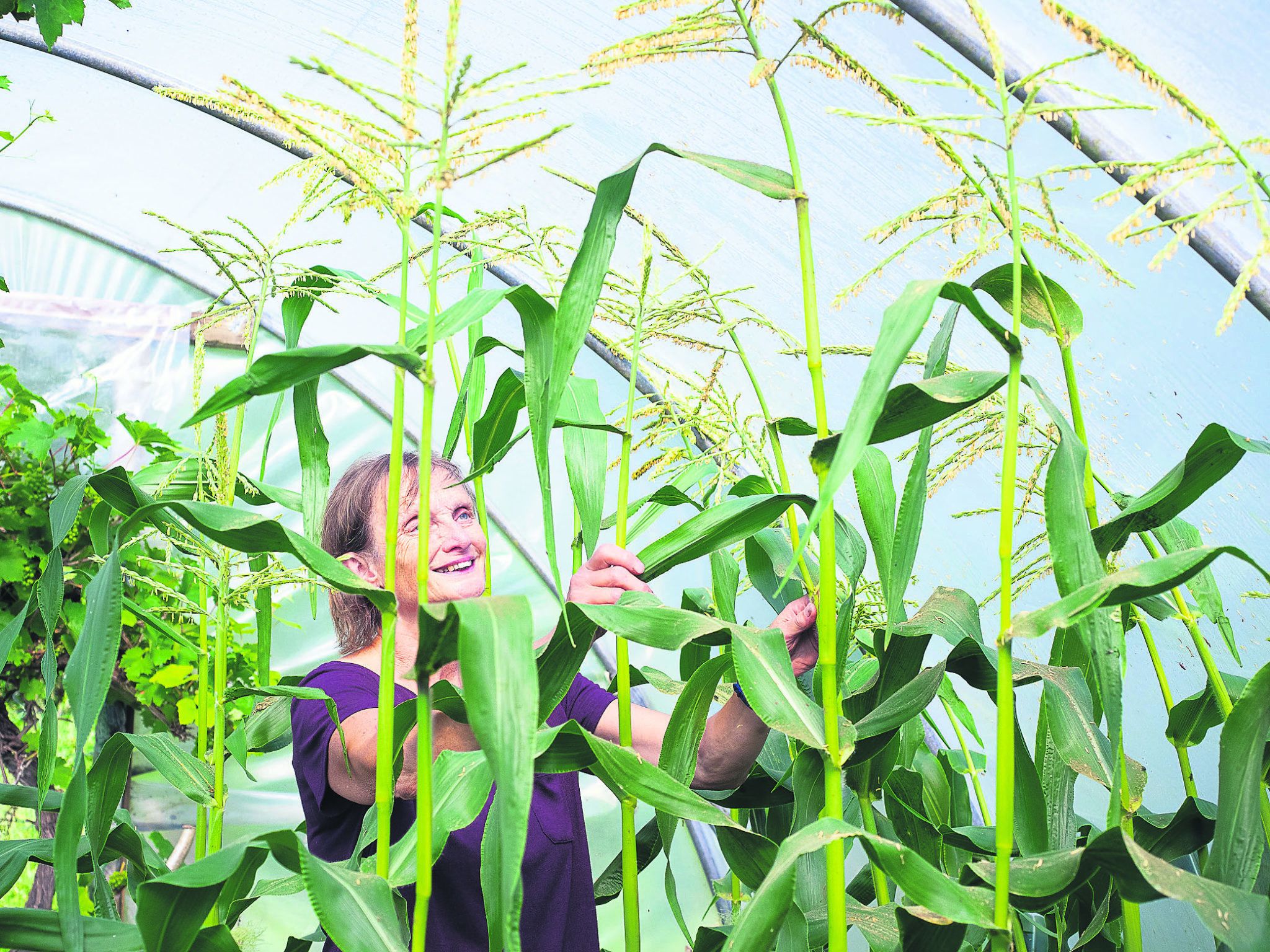IT HAS been an odd year so far for the garden. Some things are doing very well and others are struggling.
Many plants are well ahead of themselves with both my early potatoes and autumn planted onions coming ready to lift a couple of weeks sooner than usual. And some flower border regulars have finished flowering a few weeks early too.
The extreme heat in June made it hard for some small plants to establish and watering had to be careful so as not to cause root rot while trying to keep soil damp enough to encourage growth.
For the first time ever in my garden, it’s the brassicas that have suffered the most (with the exception of broccoli, oddly enough). These plants thrive in our often damp and cool summers, and they do okay with heat once they are growing well with an established root system. Many will stand through the hardest of winters but the hottest June on record really isn’t their thing.
I’m hoping that the damper and cooler weather of late will turn things around and brassicas will thrive. It’s hard to see how the brussels sprout stems will grow quite as long and productive as usual, but there are always many things that grow well to compensate for the ones that don’t. Enjoy the hot weather crops that are thriving and producing a bounty from healthy plants.
Tomatoes
Plants have grown strong and produced an abundance of flowers plus some early ripening fruits in June. There are plenty more turning red now and there should be a bumper crop to come. There’s nothing quite like the taste of the first fresh-picked tomatoes of the year, but do look after plants to get the best crop that you can.
• Remove lower leaves so more light and air can reach ripening fruits.
• Feed plants every 7-10 days with a high potash feed and keep the soil damp around roots – many of which are close to the surface.
• Keep nipping out side-shoots and tie stems into supports.
Watch out for blight!
Tomatoes are in the same family as potatoes so check foliage for grey splotches and nip out any affected leaves. Shut doors and windows close to your tomato plants on warm damp days if you are growing under cover, but aim to leave some good ventilation at the other end of the structure. It’s a fine balance between excluding blight spores and allowing enough ventilation so moulds don’t flourish – be vigilant and do the best that you can. Keeping leaves dry in blighty weather will help reduce the spread of this disease even if some spores do drift onto them.
 Shake sweetcorn stems for good pollination. (Photo: Ben Russell)
Shake sweetcorn stems for good pollination. (Photo: Ben Russell)
Sweetcorn
This is a favourite food in my family. We gather in August to have a sweetcorn feast. There’s no comparison between pre-packaged cobs and those that have gone from a plant to a pan of boiling water in less than half an hour. Plants do well in a polytunnel and in a hot summer they can crop well outdoors. Just remember one or two tips to get plenty of golden kernel filled cobs.
• Sweetcorn likes plenty of water. Roots go deep and water should too.
• Nitrogen helps speed up growth so use a liquid feed if plants aren’t growing as they should.
• In an outdoor setting, pollen is blown from one plant to another and cobs stand a good chance of being fully formed. If a strong wind blows pollen away then you could be in difficulty.
In a greenhouse or polytunnel there is no wind, so you need to shake stems just enough for pollen to fall from the tassels at the top of plants onto
the stalks further down the stem where the cobs will
form.
• Stems grow tall under cover and they may end up crushed against the roof.
Make sure to shake pollen in all directions so all potential cobs are dusted with some.
July sowings
Don’t forget about making some new sowings in the rush to do everything else. These will help keep a greenhouse or polytunnel producing through the autumn and winter months.
Spinach, Swiss chard, Florence fennel, parsley, beetroot, lettuce, pak choi, spring cabbage, kohl rabi, turnips, rocket and mustard greens can all do well from July sowings.
French beans and Mange-tout peas can give good crops in autumn if the weather is kind. Choose quick-cropping early varieties for the best results.
 Pretty geraniums fill gaps in the border. (Photo: Ben Russell)
Pretty geraniums fill gaps in the border. (Photo: Ben Russell)
Geraniums
These pretty stalwarts of the perennial flower border are one of the easiest plants to grow. Clumps grow quickly, they spread to suppress
weeds and, if you can provide a small amount of water in a drought, they can flower for months.
Trim off any dead stems when flowering is finished and tidy around clumps that have got straggly and too big. Clumps can be divided in the autumn to fill gaps.








